Aguahoja I by Mediated Matter Group is a robotically fabricated structure made of organic matter
Neri Oxman's Mediated Matter Group has digitally designed and robotically fabricated a structure using the molecular components found in tree branches, insect exoskeletons and human bones.
Aguahoja I examines how even the materials that we consider waste can inform design.
Standing five meters tall, the structure's skin is composed of cellulose, chitosan and pectin – the planet's most abundant materials, according to the studio.
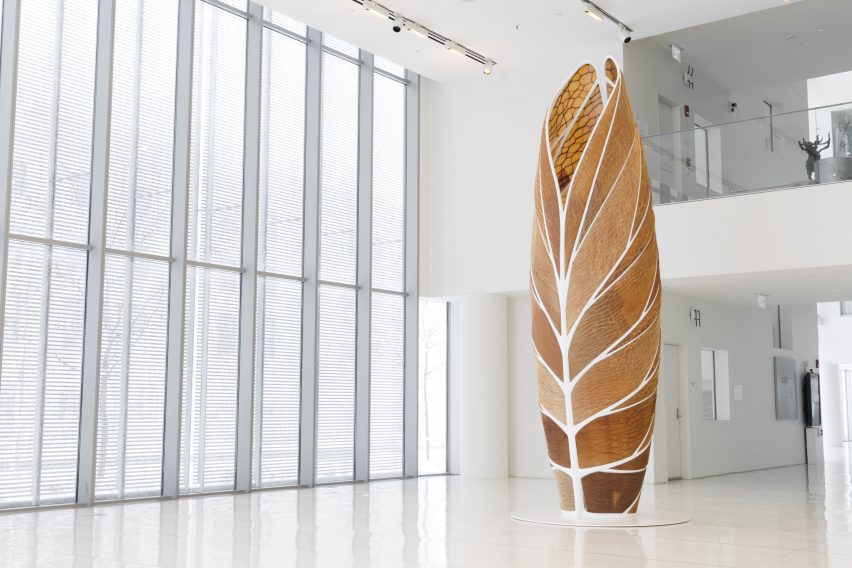
The project, which has been shortlisted in the sustainable design category for this year's Dezeen Awards, demonstrates the application of water-based robotic fabrication at a scale close to those of natural ecologies.
"Derived from organic matter, printed by a robot, and shaped by water, this work points towards a future where the grown and the made unite," said Mediated Matter Group.
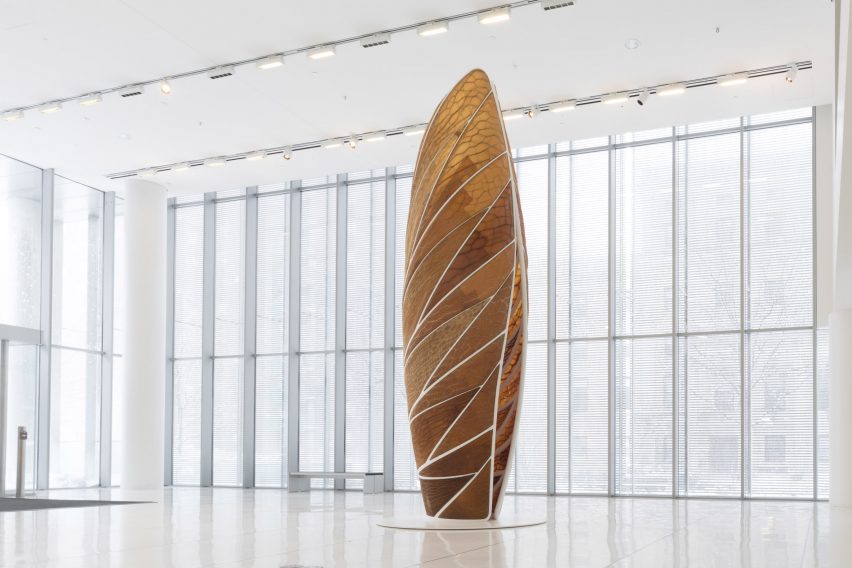
The research group, which is headed by Neri Oxman, has attempted to apply the intrinsic intelligence of natural ecologies to the way that we design and fabricate the built environment.
Part of MIT Media Lab, the Mediated Matter Group seeks to enhance the relationship between natural and man-made environments by integrating computational design with biofabrication.
The group's research in the area of material ecology is then applied to design from the micro scale to the building scale.
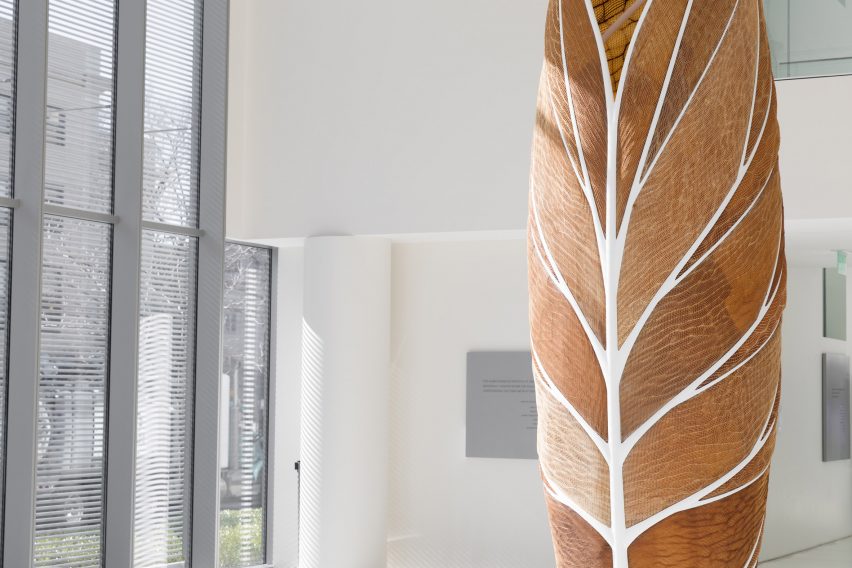
"In contrast to the biological world, the built environment is comprised of artificial, inanimate objects that are designed to perform a finite set of predefined functions," they explained.
"The pace at which we build structures has required us to extract raw materials from the earth and appropriate them far from their native habitats faster than they can be replenished," added Mediated Matter Group. "When their function is served or outlived, these materials become permanent waste in our landfills and oceans."
Aguahoja I was made to highlight this inefficiency in comparison to nature's ability "to do more with less".
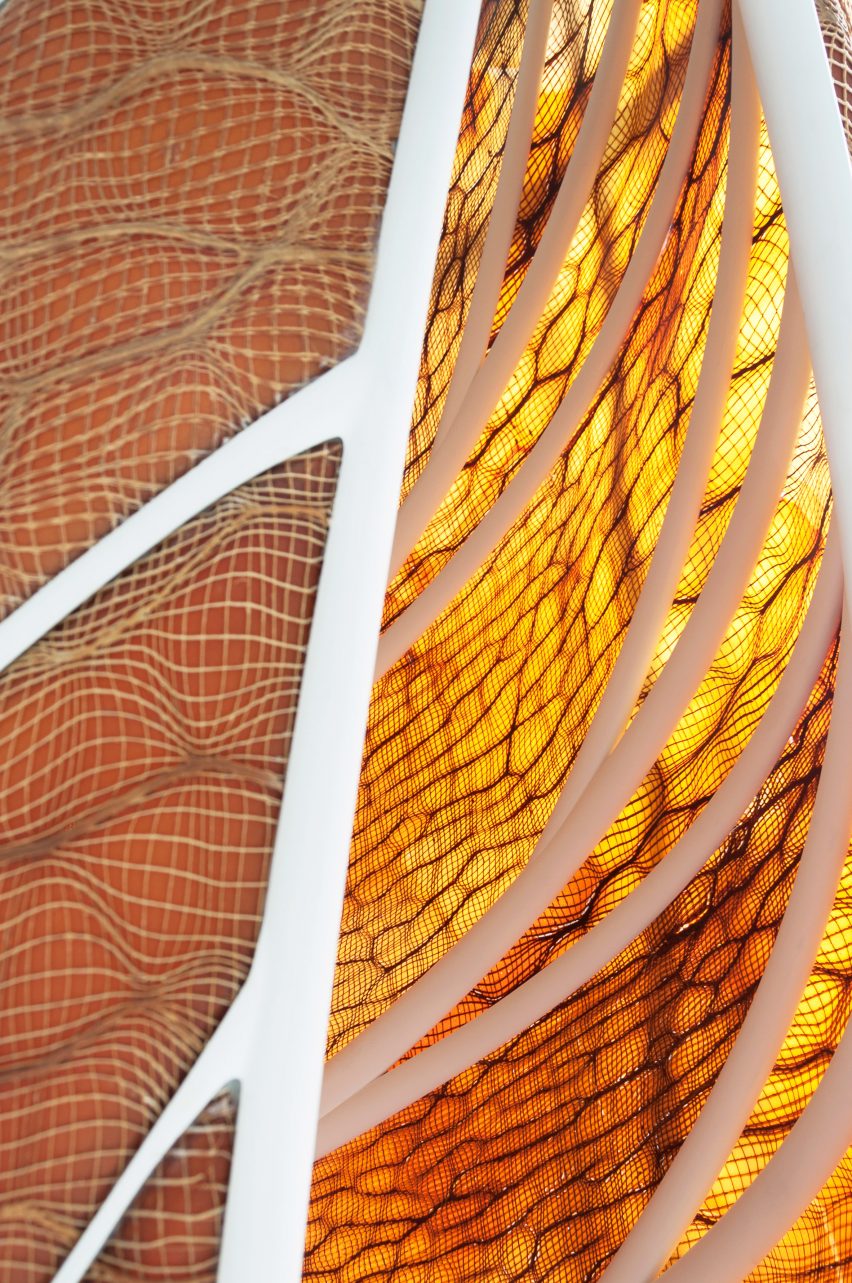
The structure's flexible bio-composite skin is printed at room temperature using water-soluble materials. When exposed to rain, it decomposes, allowing the materials to reenter the natural ecosystem and continue the natural cycle.
"Matter produced by one member of an ecosystem, living or nonliving, inevitably fuels the lifecycle of another," the research group explained. "The result is a system fuelled by water with unparalleled efficiency in the use of energy and resources."
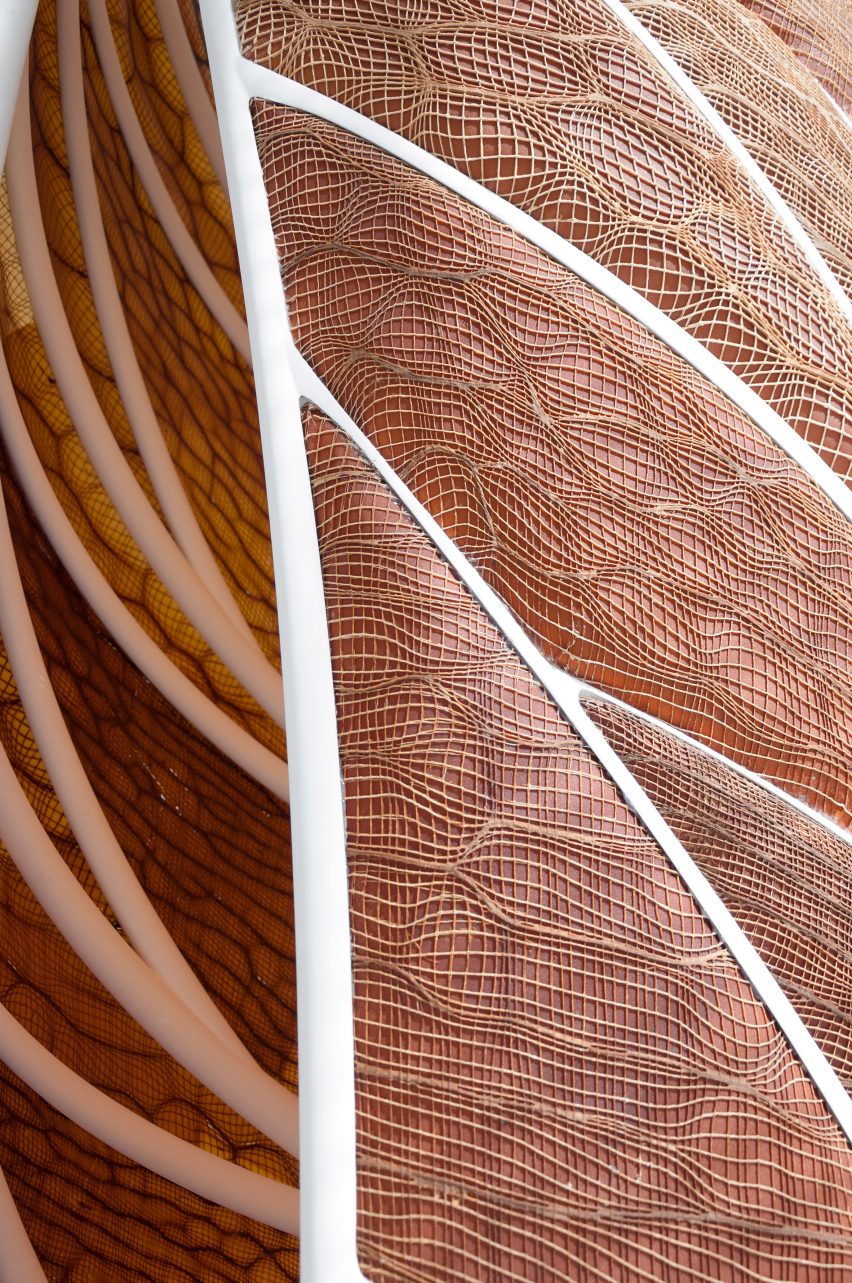
According to the studio, through small changes in chemical composition, the organic materials can be as tough and flexible as leather or as rigid as wood.
The material also has the ability to respond to changes in environmental conditions such as heat and humidity.
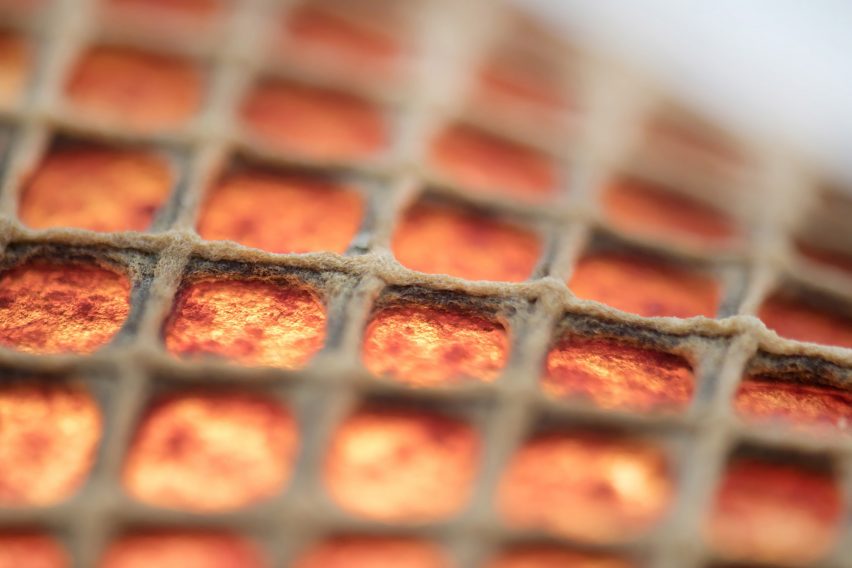
"At a time where the planet is in dire need of sustainable design and construction methods, Aguahoja provides an example of what can be made with the earth's most abundant, organic materials," said the group.
"By synthesising sustainable materials from organic waste streams, tuning their properties, and programming their decomposition and return to ecosystems, the project takes ownership over a design's birth, life, and death," they added.
The Aguahoja I pavilion and associated artefacts were exhibited at the MIT Media Lab Lobby in February 2018.
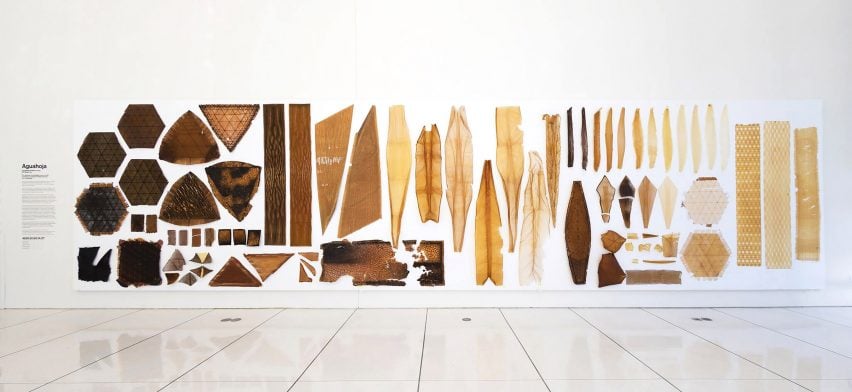
Another Mediated Matter Group project that explores the intersection between technology and nature is the Vespers series of death masks.
These explore the idea of rebirth through five 3D-printed masks that function as "biological urns", inhabited by synthetically engineered microorganisms.
The microorganisms produce pigment that gradually colour the masks, as well as useful substances that could be harvested for use in humans, such as vitamins and antibodies.
Project credits:
Team members: Jorge Duro-Royo, Joshua Van Zak, Yen-Ju (Tim) Tai, Andrea Ling, Christoph Bader, Nic Hogan, Barrak Darweesh, Laia Mogas-Soldevilla, Daniel Lizardo, João Costa, Sunanda Sharma, James Weaver, Matthew Bradford, Loewen Cavill, Emily Ryeom, Aury Hay, Yi Gong, Brian Huang, Joseph Faraguna, Neri Oxman.
Acknowledgements: MIT Media Lab, GETTYLAB, Robert Wood Johnson Foundation (RWJF), Autodesk BUILD Space, TBA-21 (Thyssen-Bornemisza Art Contemporary), Wyss Institute at Harvard University, Stratasys.